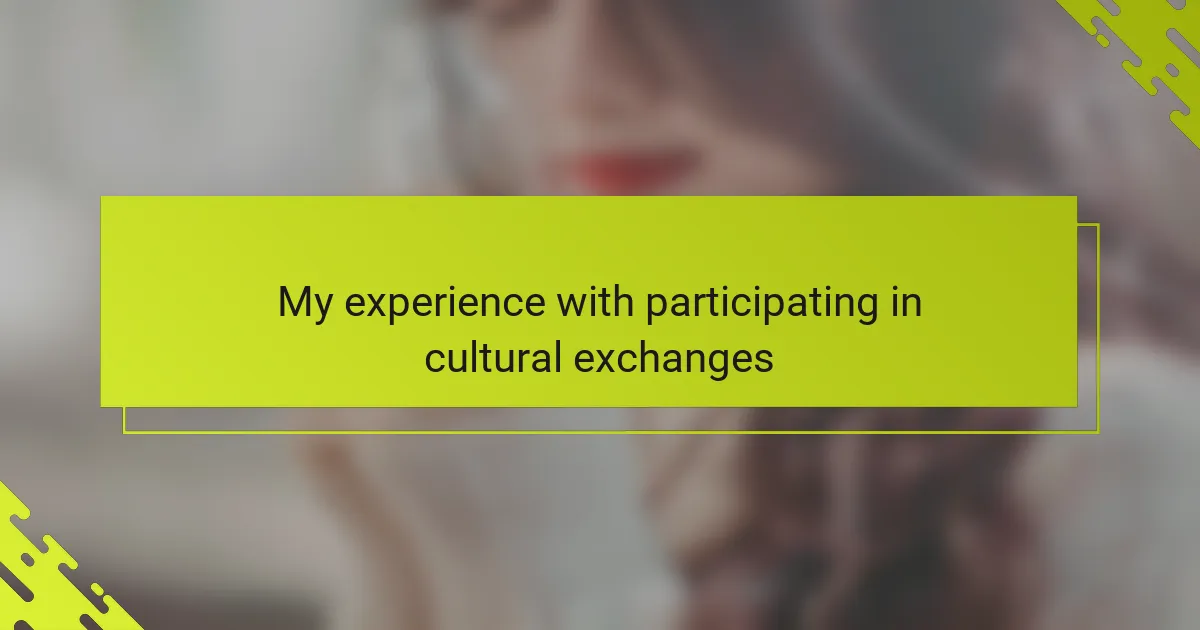Key takeaways
- Queer women culture creates safe spaces for authenticity, fostering connection through shared stories, art, and activism.
- Cultural exchanges promote empathy and understanding by allowing individuals to experience and connect with different communities and perspectives.
- Preparation for cultural exchanges involves understanding cultural nuances and self-reflection to build trust and genuine connections.
- Personal growth often occurs through navigating discomfort in diverse environments and recognizing the unique and collective experiences within queer communities.
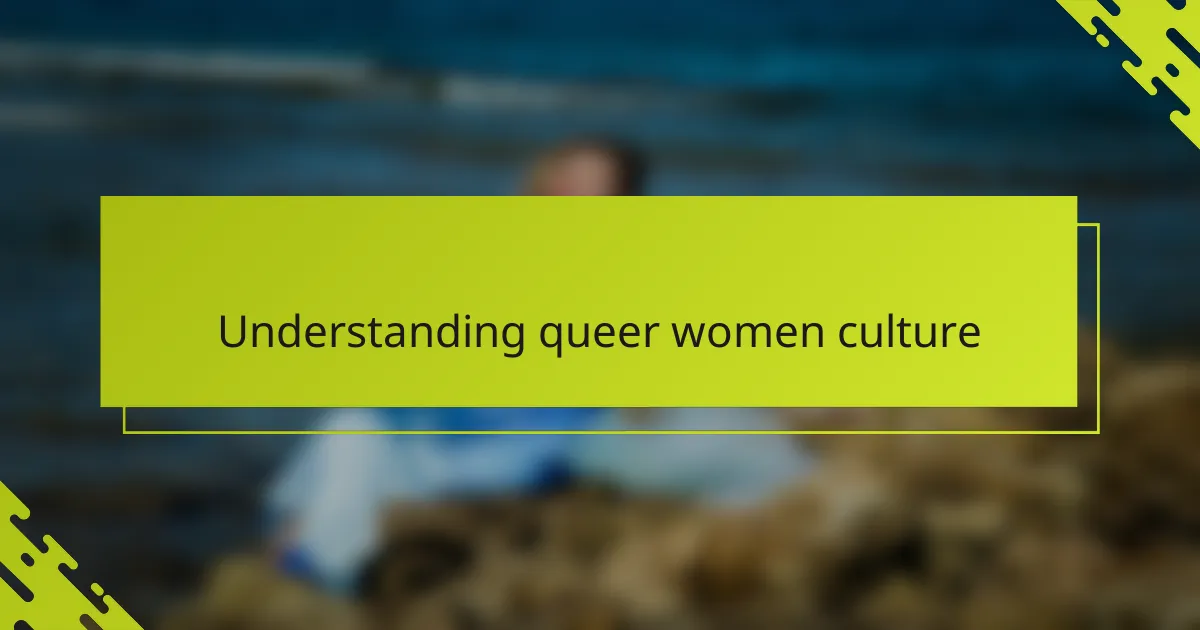
Understanding queer women culture
Queer women culture is rich and multifaceted, blending diverse identities, histories, and expressions into vibrant communities. When I first encountered this culture, I was struck by how it creates safe spaces that celebrate authenticity while challenging societal norms. Have you ever felt the power of belonging somewhere that truly sees you?
What fascinates me most is how queer women culture fosters connection beyond labels. It’s about sharing stories, art, and activism that reflect lived experiences, often invisible elsewhere. I remember attending a queer women’s art show where every piece felt like an intimate conversation—raw, honest, and deeply moving.
Understanding this culture means embracing its fluidity and resilience. It’s not static but constantly evolving through dialogue and self-discovery. How often do we pause to acknowledge the courage it takes to live openly in a world that doesn’t always make space for queer women? For me, this realization has been both humbling and inspiring.
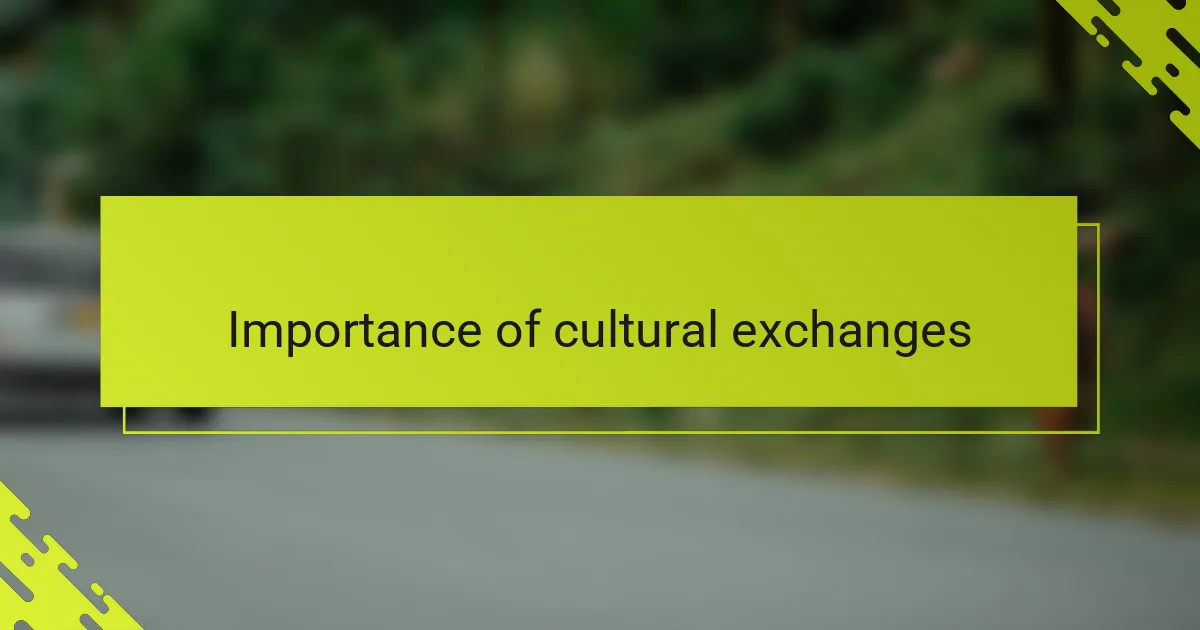
Importance of cultural exchanges
Cultural exchanges open a doorway to experiencing the world through someone else’s eyes, and I’ve found this to be profoundly transformative. When I participated in an exchange, I wasn’t just learning new customs—I was feeling the heartbeat of another community, realizing how much we share beneath the surface. Have you ever had a moment where a simple conversation completely shifted your perspective? That’s the power of cultural exchange.
What struck me most was how these exchanges foster empathy in ways that books or documentaries simply can’t. Being present with someone else’s story, their traditions, and struggles made me feel a deeper connection to not just their culture but to humanity itself. It’s a reminder that understanding lives at the intersection of experience and openness.
At times, cultural exchanges can also challenge our assumptions about identity and belonging. I vividly remember feeling both excited and vulnerable stepping into a space so different from my own—wondering if I truly belonged. Yet, that discomfort opened a door to growth and genuine connection. Isn’t it beautiful how stepping outside ourselves can sometimes bring us closer to who we really are?
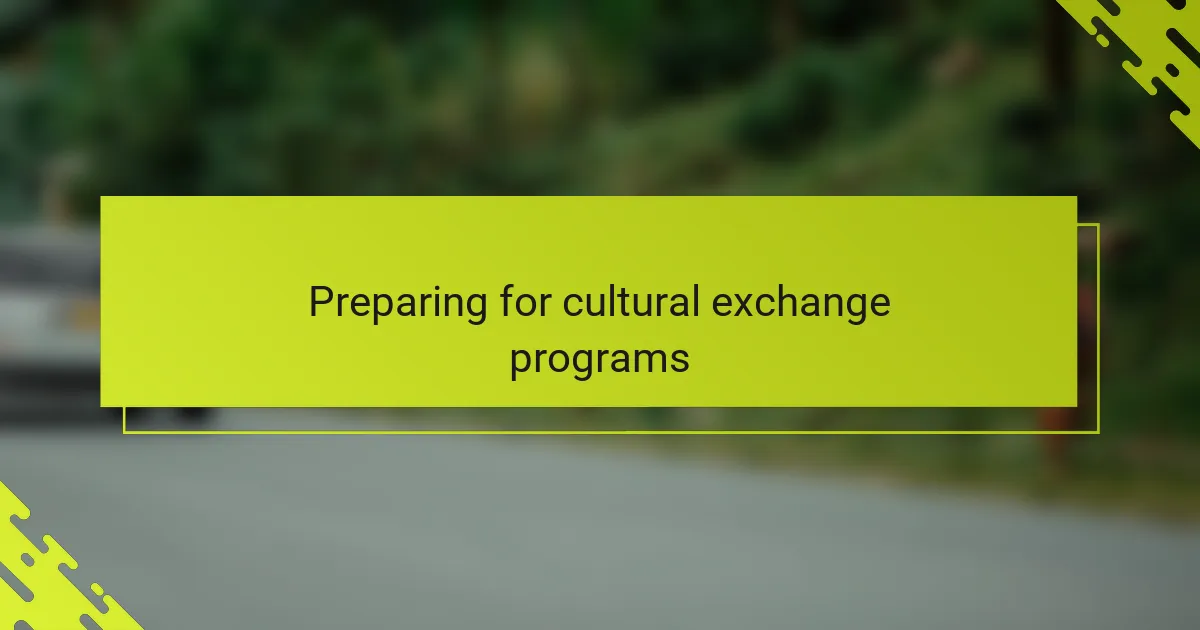
Preparing for cultural exchange programs
Preparing for a cultural exchange program means more than packing your bags—it’s about mentally stepping into a new world. I remember feeling a mix of excitement and nervousness as I researched the host community’s values and everyday life, knowing these details would shape how I connected with people. Have you ever found that understanding small cultural nuances makes all the difference in building trust?
I also learned that preparing emotionally is just as important. Before leaving, I took time to reflect on my own identity and how it might be received or misunderstood. This self-awareness helped me approach each interaction with both confidence and humility, which felt crucial for genuine connection.
Lastly, practical prep like learning basic phrases or local customs can ease the initial awkwardness. I still recall how a simple “hello” in the local language opened doors and hearts, making me feel more welcomed and less of an outsider. What small gestures have you found help break down barriers when entering a new culture?
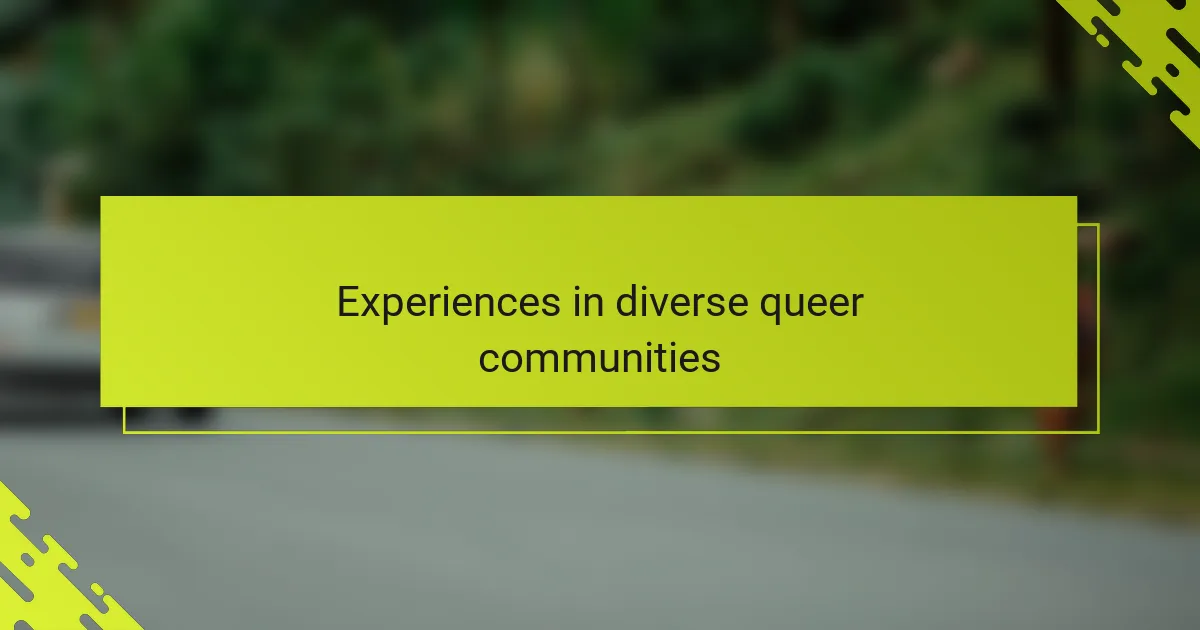
Experiences in diverse queer communities
Navigating diverse queer communities during cultural exchanges revealed to me just how varied and vibrant our shared experiences can be. I once attended a gathering where, despite differences in language and traditions, the room pulsed with a common desire for visibility and acceptance. Have you ever stepped into a circle of strangers and instantly felt a profound sense of kinship? That’s the magic I encountered time and again.
What stood out most was the blend of resilience and joy in these communities. I remember listening to stories of queer women who carried histories of struggle yet radiated laughter and hope. It made me realize how cultural roots and resistance shape not only identity but also the spirit of togetherness.
At moments, I grappled with my own assumptions—wondering how my experiences fit into a larger mosaic of queer lives across the globe. These exchanges pushed me to question: How do we honor both our unique journeys and the collective strength we embody? For me, embracing that balance became a pivotal part of growing within queer culture.
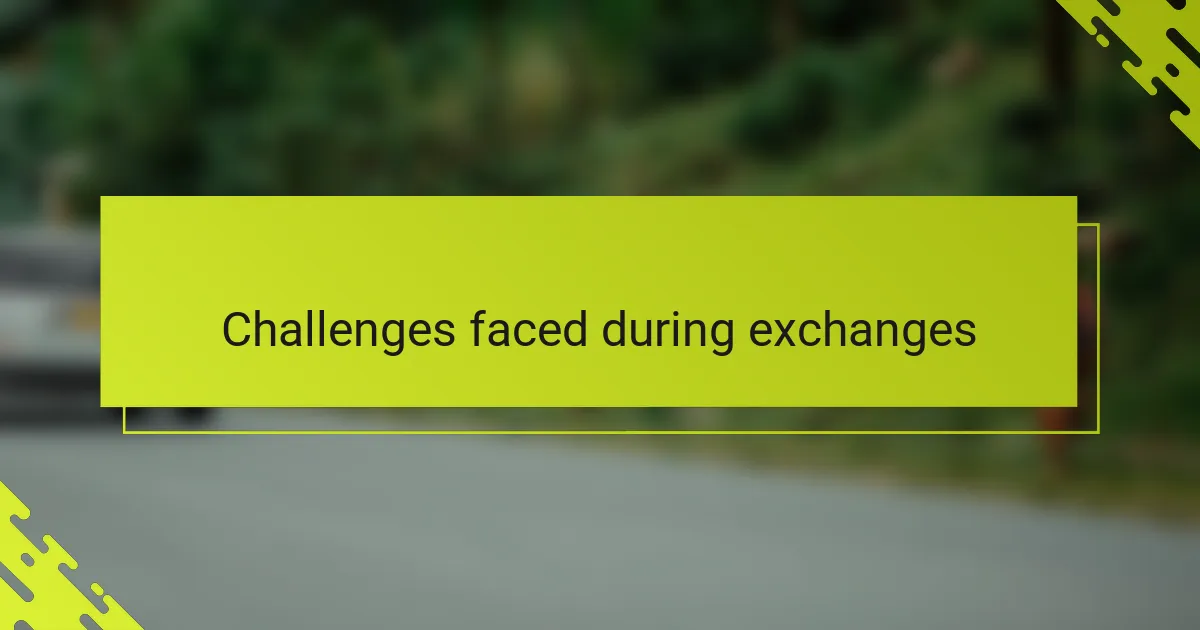
Challenges faced during exchanges
One challenge I often faced during cultural exchanges was navigating different levels of acceptance within queer communities. I remember feeling uncertain in spaces where queer identities were less visible or openly discussed, which made me question how to express myself authentically without overstepping local norms. Have you ever hesitated to share a part of yourself because you weren’t sure how it would be received?
Language barriers also posed unexpected obstacles. Even when everyone spoke a common language, certain queer-specific terms or cultural references didn’t translate well, leading to moments of confusion or inadvertent offense. I found myself constantly learning how to listen beyond words—to tone, gesture, and silence—to truly understand and connect.
Sometimes, the most difficult hurdle was confronting my own assumptions. I recall a time when I realized that what felt like progress in my community didn’t exist in the same way elsewhere, and that realization was humbling. How often do we reflect on the fact that queer experiences are not monolithic, and that embracing this diversity means sitting with discomfort as well as celebration?
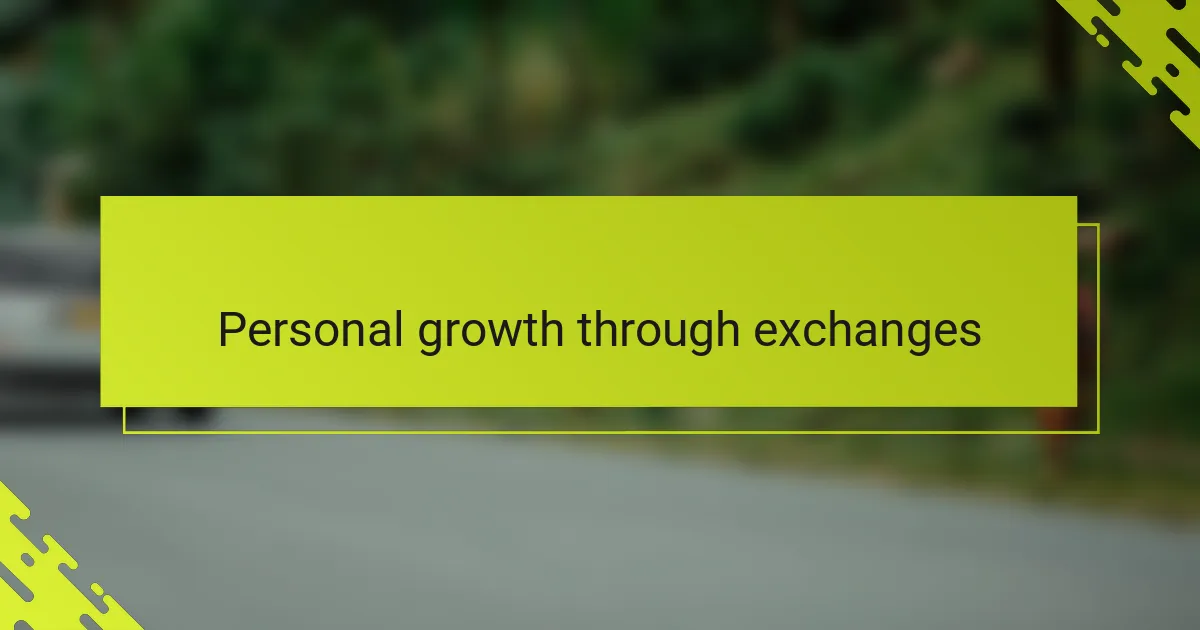
Personal growth through exchanges
Participating in cultural exchanges has been a catalyst for my personal growth in ways I hadn’t anticipated. I remember feeling a mixture of awe and vulnerability as I navigated unfamiliar norms, realizing that growth often comes from leaning into discomfort rather than shying away from it. Have you ever noticed how those moments of uncertainty can actually reveal parts of yourself you didn’t know existed?
What surprised me most was how these experiences sharpened my self-awareness. By seeing my identity reflected through different cultural lenses, I gained a deeper understanding of my own values and beliefs. It was like holding up a mirror shaped by diverse perspectives, allowing me to question and affirm who I am in new and powerful ways.
At times, growth felt less like a sudden leap and more like a gentle unfolding—small insights that gradually reshaped my worldview. Whether it was sharing a quiet conversation over tea or joining in a collective celebration, these exchanges taught me that personal transformation happens in the connections we build and the openness we cultivate. Isn’t it amazing how stepping into someone else’s world can help us step more fully into our own?
